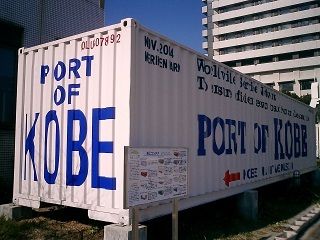From Guest Blogger Joe Fort: The Invisible Industry–Five Facts About Container Shipping

Shipping by Sea is Green
When compared to moving freight by truck, train, or airplane, a container ship is the most environmentally friendly option. The amount of greenhouse gases emitted per container when traveling 1,000 miles is comparable to that same container being driven on a truck for 100 miles. However, things aren’t as “green” as they seem. Since the shipping industry is so large, if it were to be considered a country, it would come in 6th place for countries that produce the most pollution. Considering the average container ship can hold 10,000 containers, the trade-off is quite mind-blowing.
Shipping is Massive
As this very moment, there are more than 20,000,000 shipping containers being transported across the world’s oceans. That massive figure doesn’t include containers that are sitting in ports, traveling on railcars, or being driven on flatbeds. With more than 55,000 merchant ships and 1,500,000 seafarers working on these ships, the shipping industry regularly makes up a significant portion of nation’s GDP, usually upwards of 2% for major shipping nations.
Shipping Runs Through China
As the world’s largest country, China’s industrial power has been on display for decades as a hub for manufacturing and low-cost labor. The Port of Shanghai is the busiest port in the world, as it handles more than 33,000,000 containers per year. In addition to handling a massive amount of containers moving goods, China also produces roughly 90% of the world’s shipping containers, thanks to their large reserves of recycled steel that are used to create the majority of the containers.
Shipping Isn’t Perfect
The World Shipping Council estimates that roughly 550 shipping containers are lost every year, which doesn’t include catastrophic events like sinkings, piracy, or running aground. If those events were included into the tally, the figure rises to nearly 1,700. When one considers that the shipping industry moves approximately 120 million containers per year, a 0.00045% loss rate is pretty astonishing.
Shipping Keeps on Giving
The trend over the last 5 years has been to take shipping containers that have been retired from service, and find ways to repurpose them into commercial or residential structures. Architects and builders have had a field day with the shipping container, thanks to its stackbility and ease of modification. With structure like hotels, offices, homes, and restaurants popping up all around the world, the trend only seems to be heating up around the world.
So the next time you go and put on a pair of new sneakers, you can thank the shipping industry. When you bite into a banana, or drive your car to work, you can thank the shipping industry. The “invisible industry” is the driver to the world’s economy, and should be recognized in part of its contributions. Have any other cool facts about the shipping industry? Leave them in the comments below!
